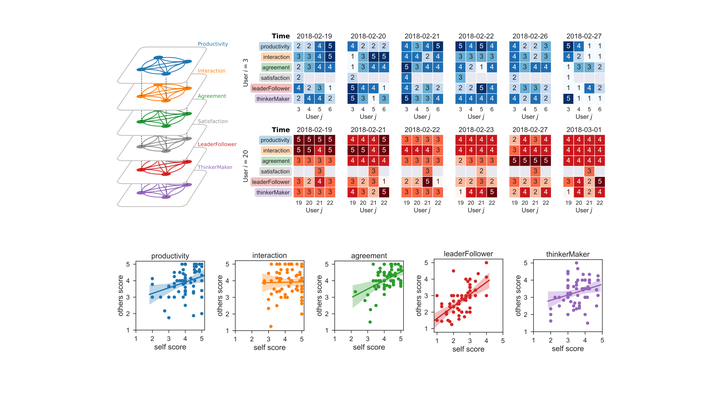Creative Connectivity Project - A network based approach to understand correlations between interdisciplinary group dynamics and creative performance

Abstract
Creativity, technology and innovation are the main driving forces of our modern world and they often trigger behavioural and cultural changes in our societies. Several studies on creative collaborations emphasise the interconnection between the creation of innovation and interdisciplinarity as they both focus on the exploration of complex matters. Studying the interdisciplinary processes through which innovation is generated is thus of fundamental importance. This research investigates the intrinsic correlation between group dynamics in interdisciplinary teams and creative processes. It explores how high-risk strategies, conflict and acceptance of failure, can finally shape different level of originality and innovation of the final outputs. This is an attempt to identify meaningful behavioural patterns in relation to specific phases of a creative process. Creative Connectivity is a collaborative research project between the Institution 1, the Institution 2 and the Institution 3. The project research has its origins in the philosophy of the Omitted for review programme, which has long been based on the relation between interdisciplinarity and innovation. Taking that programme as a case study, the research addresses the need to develop a more rigorous understanding of the creation of innovation fostered by diversity and a risk-taking culture. A novel approach combining data science and network theory has been developed to monitor, quantify and analyse specific dynamics of interdisciplinary groups of students of the Omitted for review programme. More specifically the project was based on the acquisition of multiple-source data by a web application allowing the authors to send/notify students with questionnaires and retrieve information from a slack as well, and on the analysis of the obtained data in the forms of networks by using cutting-edge methods of network science, such as multilayer networks and temporal networks. The main and novel focus was to investigate the network contribution to the performance of a team in an environment that is naturally interdisciplinary by using data respectively from a bespoke developed web application and conversation activity monitoring devices. Initial findings have shown the potential of this approach to unveil the hidden mechanisms behind creativity and the production of innovation, and the contributions of interdisciplinarity. The results of this research can be useful to universities, research centers, start-ups incubators, and policymakers who want to foster creativity and trigger innovative processes.